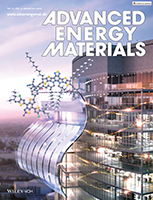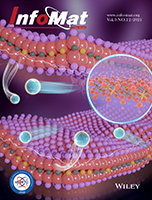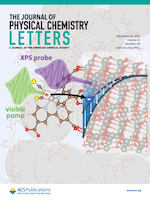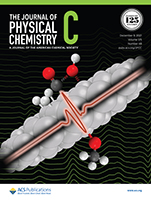Researchers traced the step-by-step path of water-molecule uptake in a porous compound, then made pinpoint modifications to shape the material’s water-sorption behavior. The results led to improvements in the compound’s efficiency at harvesting water from the air, an important step toward alleviating water shortages in the future. Read more »![]()
![]()
Revealing Lithium Metal’s Electronic Structure
Spectroscopy at the ALS and theoretical calculations at the Molecular Foundry revealed the intrinsic spectroscopic signature of lithium metal and explained the origin of previous contradictory reports. The findings provide a benchmark for further studies of lithium compounds towards batteries with higher capacity and energy density. Read more »![]()
![]()
Synergistic Engineering of Side Chains and Backbone Regioregularity of Polymer Acceptors for High-Performance All-Polymer Solar Cells with 15.1% Efficiency
Researchers developed a series of polymer acceptors with controlled backbone regioregularities and side chain structures. All-polymer solar cells based on a RRg-C20 acceptor which has a regioregular backbone and optimal side chain length achieve a high power conversion efficiency of 15.12%, attributed to high electron mobility and optimal blend morphology. Read more »
Synthesis of new two-dimensional titanium carbonitride Ti2C0.5N0.5Tx MXene and its performance as an electrode material for sodium-ion battery
Researchers report on the synthesis and characterization of a new 2D carbonitride MXene, Ti2C0.5N0.5. They explore the performance of this new MXene as electrode materials for sodium-ion batteries (SIBs). It outperformed its carbide counterpart (i.e., Ti2C) and all the other reports for multilayer MXenes in SIBs, and it showed a stable electrochemical performance over 500 cycles. Read more »
New Device Advances Commercial Viability of Solar Fuels
A Berkeley Lab research team developed a new artificial photosynthesis device component that exhibits remarkable stability and longevity as it selectively converts sunlight and carbon dioxide into two promising sources of renewable fuels—ethylene and hydrogen. Read more »
Nanoscale Confinement of Photo-Injected Electrons at Hybrid Interfaces
Picosecond time-resolved x-ray photoemission spectroscopy provides real-time electron distributions of donors and acceptors in a prototypical bipyridyl-ZnO hybrid light harvesting system. The measurements show that photo-injected electrons remain localized within the defect-rich surface region of the nanoporous ZnO substrate, revealing a challenge for the extraction of free charge carriers. Read more »
Direct Observation of Surface-Bound Intermediates During Methanol Oxidation on Platinum Under Alkaline Conditions
A comprehensive mechanism for the methanol oxidation reaction (MOR) in alkaline media is presented, and it is shown that the MOR proceeds via two different pathways (via COad or H3C–Oad intermediates). The latter dominates the overall MOR current, suggesting that the H3C–Oad oxidation could be a viable pathway to accelerate the MOR in alkaline systems. Read more »
Strategies for Reducing Platinum Waste in Fuel Cells
Industry and university researchers used the ALS to explore why the platinum used as a catalyst in hydrogen fuel cells degrades unevenly. The resulting knowledge has enabled the development of simple, effective strategies to reduce the waste of precious catalyst material, lowering the costs associated with a promising green technology. Read more »![]()
![]()
A Split-Screen View of Solar-Cell Crystallization
Researchers simultaneously monitored both the structure and function of a photovoltaic material as it crystallized from solution. The work raises the prospect of rationally tuning materials for optimal performance in photovoltaics and other light-manipulating devices, including light-emitting diodes, detectors, and lasers. Read more »![]()
![]()
New Technique Paves the Way for Perfect Perovskites
A new solar material, organic-inorganic halide perovskites, could one day help the U.S. achieve its solar ambitions and decarbonize the power grid. A recent study reports that manufacturing could be aided by a new instrument that uses invisible x-ray light and visible laser light to probe a perovskite material’s crystal structure and optical properties as it is synthesized. Read more »
- « Previous Page
- 1
- …
- 4
- 5
- 6
- 7
- 8
- …
- 16
- Next Page »









